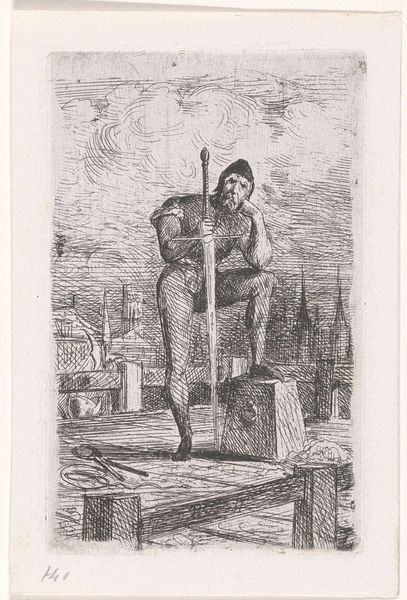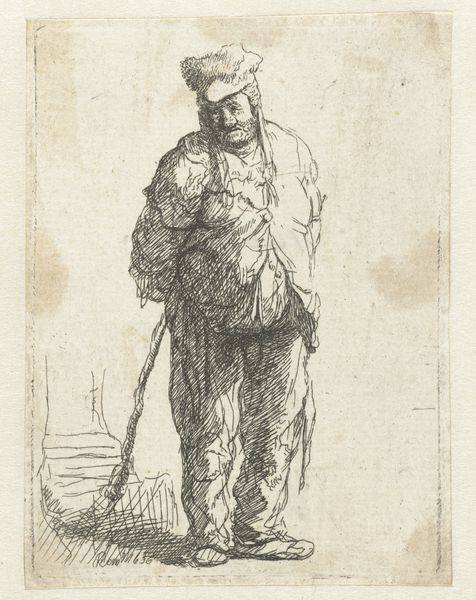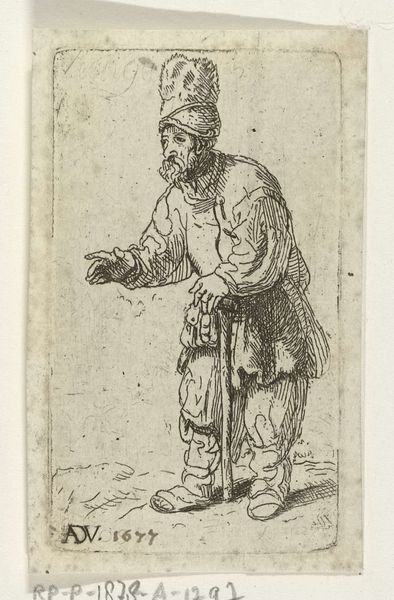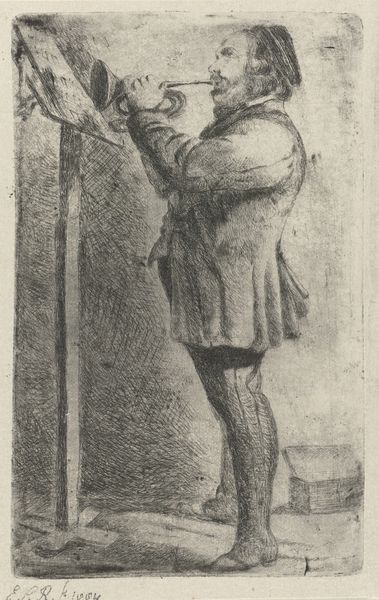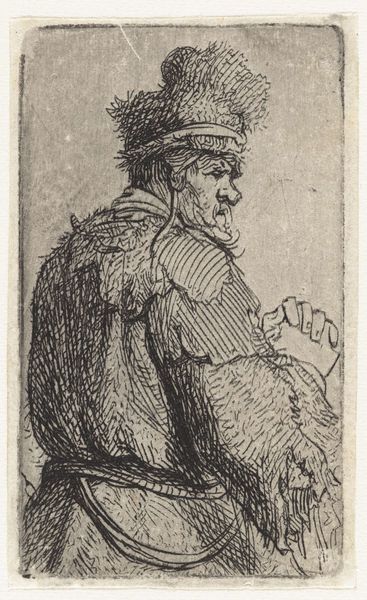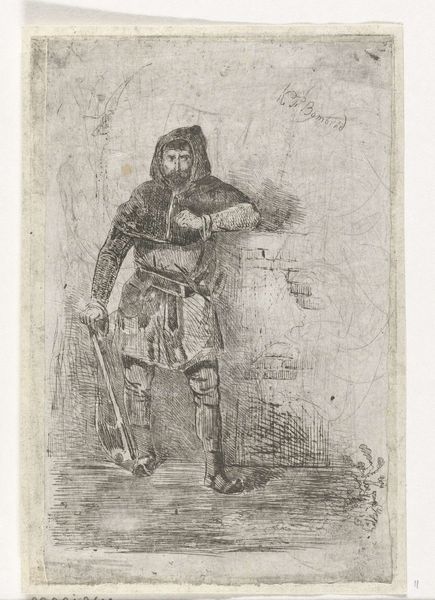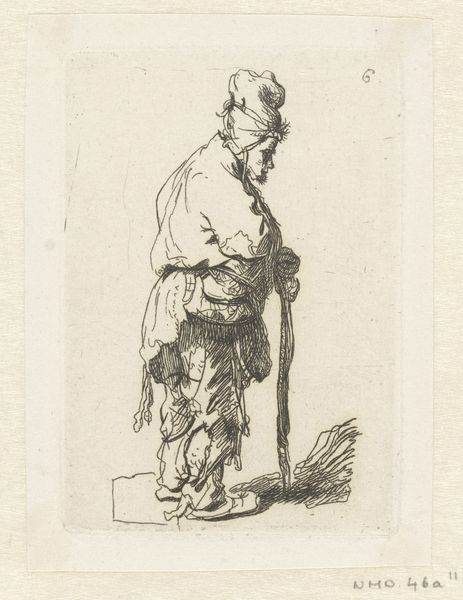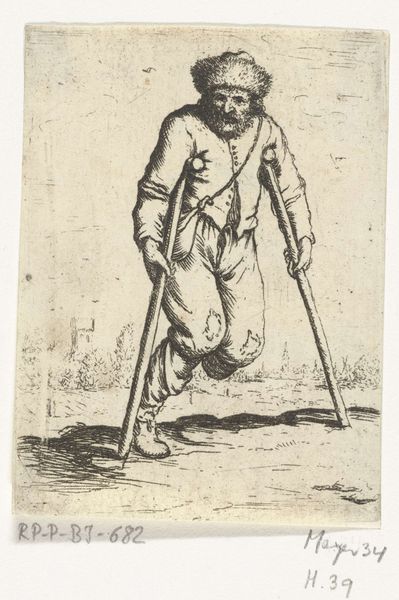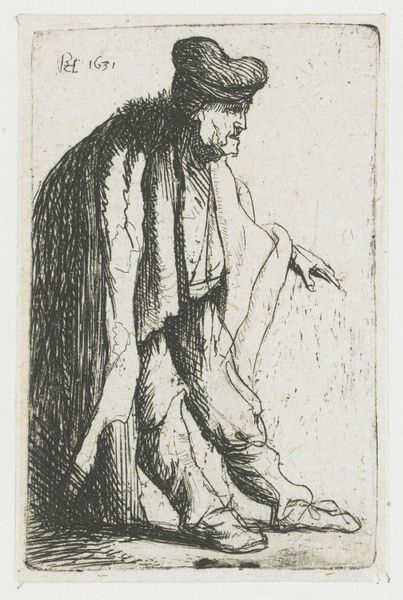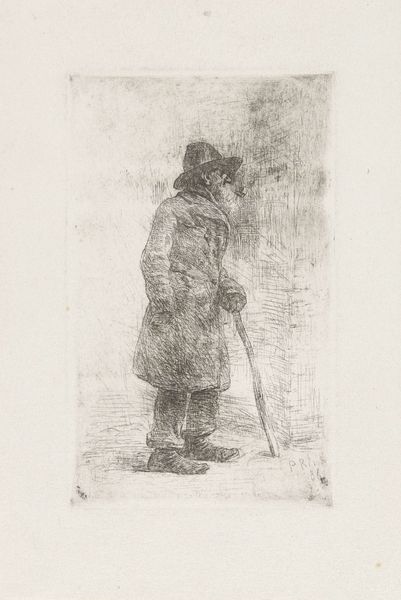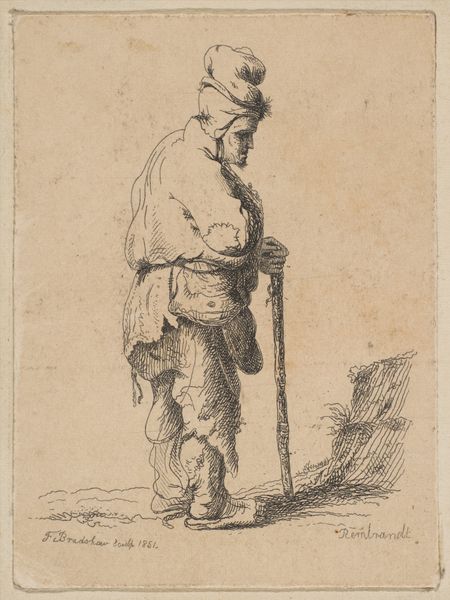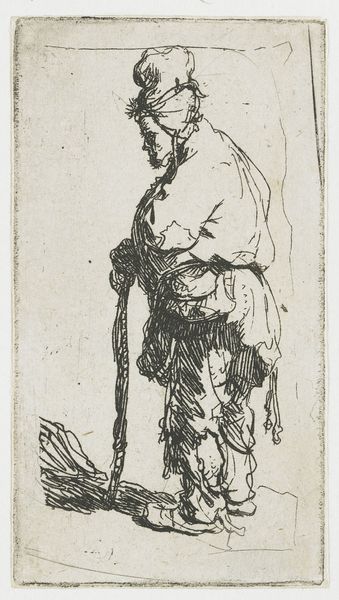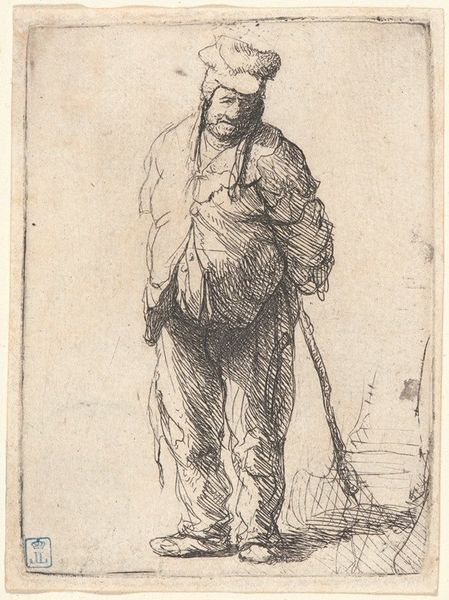
drawing, ink, pencil
#
drawing
#
amateur sketch
#
toned paper
#
light pencil work
#
pen sketch
#
pencil sketch
#
landscape
#
figuration
#
personal sketchbook
#
ink
#
ink drawing experimentation
#
pen-ink sketch
#
pencil
#
sketchbook drawing
#
sketchbook art
Dimensions: height 105 mm, width 66 mm
Copyright: Rijks Museum: Open Domain
Curator: Here we have Willem de Famars Testas' "Beul met zwaard," likely created between 1844 and 1896. It's an intriguing piece, mostly rendered in pencil and ink. Editor: My initial feeling is…melancholy. The figure, this executioner with his sword, appears burdened rather than triumphant. The sketch-like quality only adds to the sense of immediacy and introspection. Curator: Yes, Testas seems more interested in conveying emotion than documenting a specific historical event. The figure, placed against a skyline, becomes symbolic. Considering the historical context, public executions were fading from practice in Europe at this time, signaling changing attitudes toward justice and punishment. Editor: Precisely. So, what does it mean to depict the executioner in such a…pensive state? Is it a commentary on the changing role of the executioner in society, the moral weight of capital punishment, or perhaps an exploration of individual agency within state-sanctioned violence? Curator: Possibly all those things. It's also worth looking at the use of media; it’s not an official government commission, just personal work that shows an interest in social issues and class within the community. The rough pencil and ink marks point toward something preliminary or a study; and therefore maybe his social commentary is implicit. Editor: That’s interesting, and thinking about that personal inflection, it humanizes a figure often demonized, prompting a sense of empathy. The composition, with the subject framed by both the sword and what appears to be the gallows structure, creates this closed visual world. It represents more than an individual but an ideology and a specific temporal, geographical space. Curator: I agree; it pushes us to consider these historical roles. How are people participating or pushing back against the systems? Editor: Ultimately, I think this artwork challenges us to confront the uncomfortable aspects of our past, sparking a crucial discourse. Curator: It reminds us that those deemed monstrous or villainous are still products of, and active participants within, a specific context. It invites contemplation of individual choice, of historical change, and perhaps most importantly, moral reflection.
Comments
No comments
Be the first to comment and join the conversation on the ultimate creative platform.
